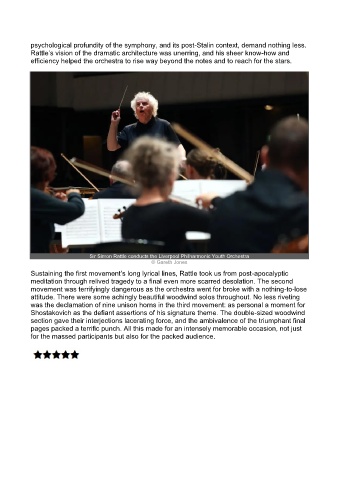Page 216 - Royal Liverpool Philharmonic Coverage Book 2023-24
P. 216
psychological profundity of the symphony, and its post-Stalin context, demand nothing less.
Rattle’s vision of the dramatic architecture was unerring, and his sheer know-how and
efficiency helped the orchestra to rise way beyond the notes and to reach for the stars.
Sir Simon Rattle conducts the Liverpool Philharmonic Youth Orchestra
© Gareth Jones
Sustaining the first movement’s long lyrical lines, Rattle took us from post-apocalyptic
meditation through relived tragedy to a final even more scarred desolation. The second
movement was terrifyingly dangerous as the orchestra went for broke with a nothing-to-lose
attitude. There were some achingly beautiful woodwind solos throughout. No less riveting
was the declamation of nine unison horns in the third movement: as personal a moment for
Shostakovich as the defiant assertions of his signature theme. The double-sized woodwind
section gave their interjections lacerating force, and the ambivalence of the triumphant final
pages packed a terrific punch. All this made for an intensely memorable occasion, not just
for the massed participants but also for the packed audience.

